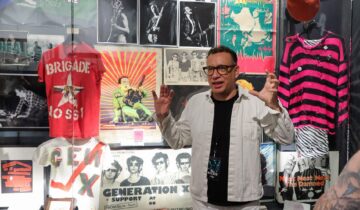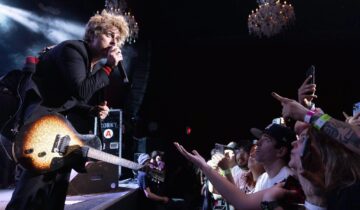 For THE ECONOMIST: It has been a tough decade for the music industry, but some are beginning to hear a happier tune. Employment for musicians is growing due to increased demand for live performances. The average hourly wage for musicians is now around $22, well more than the countrywide average of $16.
For THE ECONOMIST: It has been a tough decade for the music industry, but some are beginning to hear a happier tune. Employment for musicians is growing due to increased demand for live performances. The average hourly wage for musicians is now around $22, well more than the countrywide average of $16.
A 2012 Berklee College of Music report found that the average personal income of more than 5,000 surveyed musicians was $55,561, which is higher than the national average of nearly $43,000. (More than half of the surveyed musicians work at least three jobs, and income from musical work, such as compositions, recordings and performances, accounts for roughly 80% of take-home pay.) The industry also has several niche growth areas, including startups, video games to music therapy.
“It makes me very hopeful for our musicians here and what they can do,” said Peter Spellman, director of Berklee’s Career Development Center, to Forbes. “But it does require a certain amount of business savvy and marketing savvy, in combination with your musical savvy, to succeed.”
To arm musicians with some of this savvy, a handful of American universities are now teaching courses designed to help students get ahead in an evolving industry. In programmes at Berklee; the University of California, Los Angeles; Belmont University in Nashville; the University of Southern California; and Syracuse University in upstate New York, among other places, musicians, recording engineers, tour managers and industry executives teach classes in marketing, promotion, social media, technology and entrepreneurship.
At Syracuse University students learn to judge artist photos and mobile apps, and deconstruct artist and publishing contracts. They read trade publications such as Billboard magazine, and research concert ticket-payment services. They build business plans and run music companies on campus that promote concerts and coordinate merchandising. Students are often musically inclined, but their musical endeavours are extracurricular.
Ulf Oesterle, who runs the Syracuse program, often pairs student projects with brands such as Bushmills Irish whiskey, which are increasingly interested in entering the music business. His students recently collaborated with Converse, a trainer company. Companies including Red Bull, Yamaha, Mountain Dew, Scion (a car manufacturer), and Adult Swim (a cable network) have launched their own in-house record labels.
Many of Mr Oesterle’s first-year students say they want to work at a music label, but such jobs are scarce. They are more likely to land roles in music publishing and artist management, or work in video gaming, music startups or music therapy. “I had a meeting yesterday with a student who has an incredible live-music app idea,” says Mr Oesterle. “He does it here, where he can fail, where it’s not his job on the line.”
Musicians continue to struggle to get royalties, so Gigi Johnson, executive director at the Maremel Institute, a California-based media consultant, spends a lot of time teaching students how to exploit social-media data to make more informed decisions about marketing music to fans.
“Some of my music students have 50,000 YouTube fans, but don’t know what to do with them,” Ms Johnson said. She teaches her students how to discern the “psychographics” of fans from back-end diagnostics: where do fans hang out? How do they see themselves, and where do they eat? This data can be used to create targeted sponsorship campaigns with specific brands, she says.
Drew Taggart enrolled in the Bandier program at Syracuse because he thought he wanted to be like Ari Gold, the fast-talking agent from the television show “Entourage”. But he realised he had no patience to climb what he perceived to be a “long brewing trip to the top” of industry management. Instead he formed a DJ duo called The Chainsmokers, which creates techno remixes of songs from indie bands. Through a massive e-mail campaign to labels, bookers and bloggers, The Chainsmokers secured plenty of New York City club gigs and began touring worldwide.
“The music industry is strange,” said Mr Taggart. “Creative people I meet have this false mentality that if they make the best song in the world, everyone will listen. That isn’t true. You need an audience to get you to that place. And it’s tedious work.”
Image: cover page for Berkeley’s 2012 Music Industry report



